Do you want to improve at fighting games but don’t know where to start? Are you feeling lost on your current path of growth? Don’t worry; after reading this article, you will be on the right track to improving. This article will cover the essential points needed to reach your best potential in your respective fighting game. Without further ado, let’s get into this beginner’s guide on how to improve at fighting games!
Figure Out What Is Your Favorite Kind of Fighting Game

It can be hard to improve at a game if you don’t like how it plays. Some games are fast, while others have a slower pace. Moreover, other games have combos that are hard to learn, while some have easy and effective ones. Regardless, there’s a fighting game out there for everyone. It helps to understand that fighting games are grouped into different kinds of sub-genres. To get a better idea of the different fighting game sub-genres, check out the list below:
- 3D Games (Tekken, Dead or Alive, Virtua Fighter)
- 3v3 Games (Marvel vs Capcom, Dragon Ball FighterZ, Skullgirls)
- Arena Fighters (Naruto Ultimate Ninja Storm, Dragon Ball: Sparking Zero, Kill la Kill – If)
- 2D-Grounded Games (Street Fighter, DNF Duel, Granblue Fantasy Versus)
- 2D-Aerial Games (Guilty Gear, Melty Blood, Blazblue, The King of Fighters)
- Platform Fighters (Super Smash Bros, Rivals of Aether, Brawlhalla)
Try out each kind of sub-genre and see what fits you more! You might even find that you like multiple different ones. Once you find the right sub-genre for you, it’s time to pick a character!
Pick Your Character

Picking a character can be quite a challenge for many players, even strong ones! Characters in fighting games have different kinds of playstyles, tools, and designs. Trying to go through an entire character roster to see who fits you the most is like looking at a huge Thanksgiving table. Having said that, there are a few things you can do to easily pick a character.
For starters, you can pick which character best fits your playstyle. Maybe you want to be aggressive all the time and choose a character with many approach options. Maybe you want to play as far away from your opponent as possible and choose a runaway or zoning character. Regardless, there are plenty of different playstyles throughout the roster, so see who suits you the most.
It’s also not a bad idea to pick a character based on your strengths and weaknesses. If you struggle with complex combos and special inputs, pick a character who is easy to execute. If you have strong blocking skills and are good at counter-attacking, pick a character who has strong defensive options and counter-attacks. By analyzing your strengths and weaknesses, you can choose characters that complement your playstyle. Doing this will enhance your strengths and mitigate your weaknesses, allowing you to play more effectively and enjoy the game more.
Develop a Layer 1 Gameplan for Neutral, Defense, and Offense

You thought I was gonna say learn combos, didn’t you? Well, sorry to burst your bubble, but that’s not gonna happen yet. You can learn combos all day, but if you don’t even know how to hit your opponent, you’ll never be able to pull them off. This is where having a layer 1 game plan comes into play. Simply put, a layer 1 is an action or sequence of actions you choose to do in a situation constantly until the opponent starts dealing with it a lot more. You can think of this as “spamming“, but you’re actually making adjustments when your opponent is beating you a lot for it.
Take this example of John Choi’s CvS2 Sakura in the first round of the video below. His layer 1 in neutral is to keep walking up and throwing out standing heavy kicks and see how the opponent reacts to it. Over time, John Choi starts to notice that his opponent is dealing with it by crouch blocking it. Keeping this in mind, he then makes the adjustment to start walking up and throwing his opponent. Just watch the entire first round below and see how this plays out.
Another example of a layer 1 is consistently throwing out fireballs until the opponent starts jumping over them a lot. Again, people call this “spamming”, but if the opponent keeps losing to it, then what reason do you have of stopping? After all, you’re the one that’s winning.
The reason why having a layer 1 is good is because you can easily see why you lost or won a match. You’re less focused on yourself and more focused on your opponent in terms of how they are dealing with your layer 1. Flailing and hoping that your attacks work is not a real layer 1 because you aren’t observing how the opponent is reacting to your play. You’re just doing random things with no thought. By having a layer 1, not only do you simplify the game as much as possible and don’t feel overwhelmed, but your opponent has no choice but to lose to your layer 1 or beat your layer 1, allowing you to make adjustments from there and go back and forth with your opponent.
Leading Into Combos
Alright, alright, let’s get into combos now. So before I go over this, I need to clarify that you want to have a layer 1 game plan for neutral, offense, and defense. In the above section, I’ve already given you an idea about how some layer 1 neutral gameplans can work. When it comes to offense, a good layer 1 game plan can be just doing tick throws and seeing how your opponent tries to deal with it. If you see that your opponent is constantly teching the throw, this means that you can go for a frame trap into a powerful combo. Remember when I said that you need to learn how to get the hit before learning a combo? This is what I meant. Fighting games are about setting up a situation where you can show off your fancy combo! As a side-note, on defense, your layer 1 gameplan can be just block until your opponent decides to run up and throw you a lot.
Closing off This Beginners Guide to Fighting Games

Picking your favorite game, selecting your best character, and devising a simple layer 1 game plan is an excellent way to start your journey. From here on out, the game will be enjoyable and easier to understand, inevitably furthering your growth as a player. Lastly, remember that fighting games are a marathon, not a race. You don’t need to be good tonight, tomorrow, or even this month. You just need to be on the right path.
I hope you enjoyed this beginner’s guide to fighting games! Check out our other fighting game guides below to learn more about the genre:


